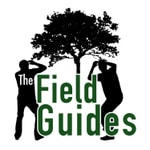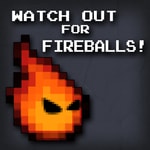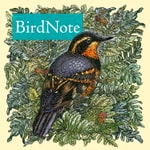The Field Guides – Détails, épisodes et analyse
Détails du podcast
Informations techniques et générales issues du flux RSS du podcast.

The Field Guides
The Field Guides
Fréquence : 1 épisode/39j. Total Éps: 93

Classements récents
Dernières positions dans les classements Apple Podcasts et Spotify.
Apple Podcasts
🇨🇦 Canada - naturalSciences
02/08/2025#71🇩🇪 Allemagne - naturalSciences
02/08/2025#67🇺🇸 États-Unis - naturalSciences
02/08/2025#48🇨🇦 Canada - naturalSciences
01/08/2025#76🇩🇪 Allemagne - naturalSciences
01/08/2025#60🇺🇸 États-Unis - naturalSciences
01/08/2025#72🇨🇦 Canada - naturalSciences
31/07/2025#71🇩🇪 Allemagne - naturalSciences
31/07/2025#51🇺🇸 États-Unis - naturalSciences
31/07/2025#75🇨🇦 Canada - naturalSciences
30/07/2025#58
Spotify
Aucun classement récent disponible
Liens partagés entre épisodes et podcasts
Liens présents dans les descriptions d'épisodes et autres podcasts les utilisant également.
See all- https://www.gumleafusa.com/
29 partages
- https://alwayswandering.com/
25 partages
- https://www.etsy.com/shop/alwayswanderingart
22 partages
- http://patreon.com/thefieldguides
25 partages
Qualité et score du flux RSS
Évaluation technique de la qualité et de la structure du flux RSS.
See allScore global : 49%
Historique des publications
Répartition mensuelle des publications d'épisodes au fil des années.
Ep. 67 - Fishers in the Field: A Hike with Fisher Researcher Dr. Scott LaPoint
samedi 31 août 2024 • Durée 01:17:11
If we want to help wildlife, we need to know when and where they’re moving on the landscape. Dr. Scott LaPoint has spent his career researching just that. When our recent episode on fisher cats left us with a lot of questions, we figured who better to help us out than Dr. LaPoint. He was kind enough to join Daniel and Bill for a hike, sharing his expertise and his amazing ability to communicate science with enthusiasm, humor, and clarity. Join the guys for a wide-ranging discussion on fishers, connectivity, and wildlife-human interaction.
Visit thefieldguidespodcast.com for full episode notes, links, and works cited.
Ep. 66 - Pinesap (The Plant, Not the Sap)
jeudi 1 août 2024 • Durée 01:04:09
Pinesap (Monotropa hypopitys) is a goofy little plant that parasitizes fungi and can often be found beneath pine trees. It is not the sap of pine trees like Daniel thought. In this episode, Bill leads the discussion about the complex relationships between pinesap, its fungal host, and the tree species the fungi has a symbiosis with. Garlic mustard (Alliaria petiolata) also makes a guest appearance! Join the guys as they get caught in a sudden rainstorm and learn about this amazing plant.
This episode was recorded on July 14, 2024 at Chestnut Ridge County Park in Orchard Park, NY.
Episode Notes
Bill brought up whether or not Pinesap (Monotropa hypopitys) should be in it’s own genus, Hypopitys. Steve asked some overly complicated questions to clarify whether or not he should believe it. With a quick search, at least Braukmann et al. (2017), Liu (2020), Shen et al. (2020), and Freudenstein & Broe (2024) found that Hypopitys groups distinctly from Monotropa in its phylogeny (i.e., evolutionary history). Hypopitys is more closely related to other genera, such as Pityopus, for example, than other species in the genus Monotropa. Steve is satisfied with this quick dip into the lit.
Thank you to Always Wandering Art (Website and Etsy Shop) for providing the artwork for many of our episodes!
Visit thefieldguidespodcast.com for full episode notes and works cited.
Ep. 58 - Insectapalooza! (Part 2)
mercredi 30 novembre 2022 • Durée 01:07:33
Our six-legged celebration continues! In this second part, the guys wrap up their behind-the-scenes tour of the Cornell University Insect Collection with Jason Dombroskie, collection manager and director of the insect diagnostic lab, and THEN, Jason provides the guys with some eye protection and takes them out into the woods for some nighttime mothing!
This episode was recorded on July 2-3, 2022 at the Cornell University Insect Collection in Comstock Hall at Cornell University and at Steege Hill Nature Preserve in Corning, NY.
Links
Check out Jason’s website to find out about his lab, research, publications, and more.
The Cornell University Insect Collection
Follow their social media feeds: Instagram, Twitter, TikTok, and Facebook
And their annual October event Insectapalooza
The Museum of the Earth’s Six-Legged Science exhibit
Visit The Finger Lakes Land Trust to find out about their vital work conserving the Steege Hill Preserve and other wildlands in central NY State.
Check out Walden Heights Nursery and Orchard, a certified organic farm specializing in cold-hardy, fruiting plants.
Support
Make a onetime Paypal donation.
Our Sponsors
Ep. 58 - Insectapalooza! (Part 1)
vendredi 30 septembre 2022 • Durée 56:48
This month, Bill and Steve geek out over insects! And it’s because they were lucky enough to have an even bigger insect geek invite them on a field trip. Jason Dombroskie is the collection manager and director of the insect diagnostic lab at Cornell University. His invite to take the guys mothing in July of 2022 turned into a marvelous, day-long adventure:
In part one, you’ll hear the guys meet up with Jason for a tour of his property and an interview delving into Jason’s background and what it’s like to be a professional entomologist (it involves studying lots of insect genitalia, among other things). We follow that up with a behind-the-scenes tour of the Cornell University Insect Collection - an assemblage spanning over 7 million insect specimens representing about 200,000 species, or roughly 20% of the world’s described insect fauna.
So, strap in and prepare yourself for…Insectapalooza!
This episode was recorded on July 2, 2022 at Jason’s property near Ithaca, NY and at the Cornell University Insect Collection in Comstock Hall at Cornell University.
Links
The Cornell University Insect Collection
Also, check out their great Instagram feed
And their annual October event Insectapalooza
Support
Make a onetime Paypal donation.
Our Sponsors
Ep. 57 - Mockingbirds Gonna Mock
dimanche 31 juillet 2022 • Durée 01:03:31
Have you ever heard a mockingbird imitate a blue jay? How about a seal imitating a Maine fisherman? This month, the guys explore what happens when animals make sounds they’re not supposed to: the wild world of vocal mimicry. Birds imitate chainsaws and car alarms, elephants speak Korean; what’s going on? With a special focus on one of the bird world’s best known mimics - the northern mockingbird (Mimus polyglottos) - the guys delve into the research trying to explain why animals - especially birds - feel the need to engage in the wildlife equivalent of, “I know you are, but what am I?”
Episode Notes
Steve wondered about the similarity between the scientific names of the northern mockingbird (Mimus polyglottos) and monkeyflowers (in the genus Mimulus). Turns out that both refer to mimicking; the mockingbird (whose scientific name means ““many-tongued mimic”) imitates the sounds of other species, and the monkeyflowers have flowers that, at least to some, seem to have grinning faces resembling those of monkeys.
Bill mentioned that the viceroy butterfly (Limenitis archippus) is often mistakenly cited as an example of Batesian mimicry. What’s up with that? Here’s what the University of Wisconsin has to say about it: “Ecologists have long preached that Viceroys have enjoyed a Batesian “Get-out-of-Jail-Free” card due to their resemblance to the toxic Monarch butterfly (Batesian mimicry—the harmless imitating the harmful). Monarchs are poisonous because their caterpillar host plant, milkweed, contains harmful cardiac glycosides. Recent research suggests that because willow leaves are very bitter, the Viceroy may be almost as distasteful as Monarchs. In that case, Monarchs and Viceroys are mimicking each other, each cashing in on the other’s bad reputation (Mullerian mimicry).”
Check out episode 34: The Downy-Hairy Game for more info on Batesian and Mullerian mimicry
The guys wondered, “Are there any large passerines (songbirds/perching birds)?” The largest seem to be in the raven family; “The heaviest and altogether largest passerines are the thick-billed raven and the larger races of common raven, each exceeding 1.5 kg (3.3 lb) and 70 cm (28 in). The superb lyrebird and some birds-of-paradise, due to very long tails or tail coverts, are longer overall.” (Source: Wikipedia)
The guys briefly discussed mobbing behavior in birds, and Bill mentioned a couple of suspected reasons behind the behavior. He regretted not mentioning what is accepted as the most likely reason: to drive away predators!
Steve wondered, “Did mimicry evolve independently?” According to a 2018 study, “Vocal mimicry evolved independently at least 237 times and was lost at least 52 times.”
Since brown headed cowbirds are nest parasites and don’t raise their own young, how do their young learn the brown headed cowbird song? Turns out that the good people at BirdNote did an episode on this very topic in 2021! Here’s the takeaway from the episode transcript” “Scientists think that when a young cowbird hears the “chatter call” of an adult cowbird, something is triggered in its brain, and it begins to learn the song of its own species. Like a kind of “password,” the chatter call guides the young bird in recognizing what species to identify with. Then, when the young cowbird is ready — probably when it’s two years old — and hears an adult male Brown-headed Cowbird sing, it will imprint on that song. It’s a remarkable adaptation, even more so when you consider that cowbirds are fostered by as many as 220 different species. And they still wind up learning their own song.”
Links
Find out more about Hoover, the talking seal.
A clip of the superb lyrebird from the incomparable David Attenborough and his series Lives of Birds
Head down a fascinating rabbithole and explore the world of mimicry
Meet Koshik, the elephant that speaks Korean
Support
Make a onetime Paypal donation.
Our Sponsors
Photo Credit
(c) bluewing – some rights reserved (CC BY-NC)
Works Cited
Ancillotto, L., Pafundi, D., Cappa, F., Chaverri, G., Gamba, M., Cervo, R. and Russo, D., 2022. Bats mimic hymenopteran insect sounds to deter predators. Current Biology, 32(9), pp.R408-R409.
Gammon, D.E. and Altizer, C.E., 2011. Northern mockingbirds produce syntactical patterns of vocal mimicry that reflect taxonomy of imitated species. Journal of Field Ornithology, 82(2), pp.158-164.
Howard, R.D., 1974. The influence of sexual selection and interspecific competition on mockingbird song (Mimus polyglottos). Evolution, pp.428-438.
Owen-Ashley, N.T., Schoech, S.J. and Mumme, R.L., 2002. Context-specific response of Florida scrub-jay pairs to northern mockingbird vocal mimicry. The Condor, 104(4), pp.858-865.
Ep. 56 - Let's Get Nuts!
jeudi 26 mai 2022 • Durée 01:19:00
Black Walnut (Juglans nigra) is a tree well-known for its ability to negatively affect other plants growing nearby, a phenomenon known as allelopathy. But is Black Walnut really as allelopathic as the Internet would have you believe? In this episode, the guys go nuts: delving into this question and many other facets of the fascinating (and tasty?) Black Walnut, including an on-air tasting of Black Walnut syrup. Enjoy!
This episode was recorded on May 11, 2022 at the Beaver Meadow Audubon Center in North Java, NY.
Episode Notes
Thank you to listener Mark Carroll for giving us the idea for this episode and providing the paper on which much of it was based.
Is Black Walnut wind pollinated? Bill mentioned during the episode that he thought the flowers were insect pollinated. He was WRONG! According to Floral Biology And Pollination Of Eastern Black Walnut, a publication by the National Forest Service, “Walnut trees are wind-pollinated and classified as monoecious; male and female flowers are on the same tree, but separated from each other.” Bill stands by his assessment, however, that the distinctive, seldom-seen flowers are worth checking out. This page provides some nice pictures; scroll down to see both the male and female blossoms. The female flowers look like milkweed pods with a sea anemone stuck on top!
What is the correct measurement of diameter at breast height (DBH)? Diameter at breast height, or DBH, is a standard method of expressing the diameter of the trunk or bole of a standing tree. Tree trunks are measured at the height of an adult's breast; in many countries, DBH is measured at approximately 1.3 m (4.3 ft) above ground, but in the US, DBH is typically measured at 4.5 ft (1.37 m) above ground. Source: https://en.wikipedia.org/wiki/Diameter_at_breast_height
Does Steve know about honeysuckles? Steve claimed that honeysuckles (Lonicera sp.) with a hollow pith are not native to eastern North America and that the ones without a hollow pith are native. According to Iowa State University, “Twigs of all species can be hollow. However, the twigs of native species tend to be less hollow with a white pith whereas the exotic species are more obviously hollow with a brown pith.”
Are there other plants with a chambered pith? Yes! Black Tupelo (Nyssa sylvatica) is another species, unrelated to walnuts, that has a chambered pith.
What does microcarpa mean? During their discussion of other walnut species, Bill mentioned the Little Walnut (Juglans microcarpa) , and Steve wondered what “microcarpa” means. The answer? Small fruit.
Links
Support
Make a onetime Paypal donation.
Our Sponsor
Picture Credit
Thank you to Always Wandering Art (Website and Etsy Shop) for providing this episode’s artwork, as well as the art for many of our previous episodes!
Works Cited
Chalker-Scott, L., 2019. Do Black Walnut Trees Have Allelopathic Effects on Other Plants?. Washington State University Extension.
Marking, L.L., 1970. Juglone (5-hydroxy-1, 4-naphthoquinone) as a fish toxicant. Transactions of the American Fisheries Society, 99(3), pp.510-514.
Willis, R.J., 2000. Juglans spp., juglone and allelopathy. Allelopathy J, 7(1), pp.1-55.
Page, Teri. Homestead Honey, https://homestead-honey.com/beyond-maple-syrup-tapping-black-walnut-trees/. Accessed 5 Apr. 2009.
Ep. 55 - Bill and Steve Go to Hell(benders)
lundi 31 janvier 2022 • Durée 01:08:00
What’s dark and slimy and over two feet long? It’s an Eastern Hellbender! This aquatic giant salamander, endemic to the eastern and central US, is the largest amphibian in North America, often weighing in at over 4 lbs.! The hellbender (Cryptobranchus alleganiensis) is, not unlike Steve, secretive and slimy but also fascinating. Join the guys for one hell of an episode learning about this rare and disappearing denizen of fast-moving streams.
This episode was recorded on January 22, 2022 at Chestnut Ridge County Park in Orchard Park, NY.
Episode Notes
Bill said that the Kinzua Bridge was about 300 feet long, but he was mistaken. The bridge was about 300 feet high. The length was 2,053 feet.
When Bill was talking about the white tips on hellbender toes, he mistakenly said that hellbenders have “fingers”. D’oh! Bill understand that salamanders don’t have toes, but he wants everyone to know he was using the term in a cutesy way.
Steve mentioned his friend Zachary Cava and Zack’s research into hellbenders. Bill was able to track down Zack’s study! Full citation below under “Works Cited”.
Around the 20:50 mark, Steve wonders if there is an ecological concept or law stating that larger species tend to go extinct more quickly than small species. After recording, Bill did some searching but could not find any specific law. Anyone out there that knows of one? Please get in touch with us!
Bill gave a quick and somewhat vague definition of siltation. Here’s a more complete definition: Siltation refers both to the increased concentration of suspended sediments and to the increased accumulation of fine sediments on [waterway] bottoms where they are undesirable. Source: https://en.wikipedia.org/wiki/Siltation
Useful Links
Check out Life Among the Milkweed, the new book from friend-of-the-podcast Melissa Borowicz Betrus
Visit Kinzua Bridge State Park and Sky Walk in Pennsylvania
Ellen Paquette’s WeeBeasties Etsy Shop (Paquette is the artist who created the plush hellbender Bill mentioned in this episode)
Stuff You Should Know’s excellent episode on zoos: Are Zoos Good or Bad For Animals?
Sponsors
Gumleaf Boots, USA (free shipping for patrons)
Thank you to Always Wandering Art (Website and Etsy Shop) for providing the artwork for many of our previous episodes!
Support Us
Support us on Patreon!
Check out the Field Guides merch at our Teespring store. It’s really a great deal: you get to pay us to turn your body into a billboard for the podcast!
Works Cited
Bodinof, C.M., Briggler, J.T., Junge, R.E., Beringer, J., Wanner, M.D., Schuette, C.D., Ettling, J., Gitzen, R.A. and Millspaugh, J.J., 2012. Postrelease movements of captive-reared Ozark hellbenders (Cryptobranchus alleganiensis bishopi). Herpetologica, 68(2), pp.160-173.
Cava, Z.A., McMillan, A.M., Pennuto, C.M. and Warren, R.J., 2018. Hellbender prey preference is superseded by native and nonnative prey behavior. Journal of Herpetology, 52(2), pp.162-170.
Crowhurst, R.S., Faries, K.M., Collantes, J. et al. Genetic relationships of hellbenders in the Ozark highlands of Missouri and conservation implications for the Ozark subspecies (Cryptobranchus alleganiensis bishopi). Conserv Genet 12, 637–646 (2011). https://doi.org/10.1007/s10592-010-0170-0
Foster, R.L., 2018. Lessons From the Past: A Historical Approach to Conservation of the Eastern Hellbender Salamander (Cryptobranchus alleganiensis) (Doctoral dissertation, State University of New York at Buffalo).
Photo Credit
"Hellbender" by John Garret is licensed under CC BY NC
Ep. 54 - Can't Touch This: A Deep Dive Into Touch-me-not
dimanche 3 octobre 2021 • Durée 01:09:00
Jewelweed. Spotted touch-me-not. Orange Balsam. It’s a plant known by many names, and, even if you don’t recognize any of them, you’ve probably popped one of its exploding seed pods. A favorite of hummingbirds and nature-lovers young and old, it’s a species with many stories to share. Listen in as the guys dive deep into the jewelweed patch, eating some seeds, trying to find the source of the “jewel” in jewelweed’s name, and getting to the bottom of the age-old claim that jewelweed is a cure for poison ivy.
This episode was recorded on September 26, 2021 at Birdsong Park in Orchard Park, NY
Episode Notes:
Which species is more common in North America: yellow (aka pale) jewelweed or orange jewelweed? While it may vary from place to place, orange jewelweed seems to be the more common species. Nearly every site we visited referred to it as “common” or “more common” and to the yellow jewelweed as “less common”. Orange jewelweed’s North American range is also broader than yellow jewelweed’s (yellow is absent from most of the Gulf states and most Canadian provinces).
When do the Witch hazel seeds explode out of their capsules? Steve and Bill were both confused on the timing. Witch hazel (Hamamelis virginiana) is a forest understory tree that blooms in the fall. The seeds take a year to develop and are forcibly expelled (because of dehiscence) from the seed capsules the following fall or winter. Check out our episode on witch hazel!
Are there any plants that produce only cleistogamous (closed, self-pollinating) flowers? Not that we could find. Most sources make reference to the fact that cleistogamous flowering is a behavior that appears to have evolved to ensure reproduction under unfavorable conditions. These conditions usually limit or prevent cross pollination of the typical, chasmogamous (open) flowers.
How many species of jewelweed do we have in North America? The Lady Bird Johnson Wildflower Center lists 4 species of Impatiens native to North America. I. capensis and I. pallida are the ones found in the east (although, as mentioned in this episode, some sources list I. capensis as native in the Pacific northwest, as well). Five nonnative Impatiens species have also been introduced to the continent.
Steve wondered what the Latin term ecalcarata means. This came up when Bill was discussing the western species of jewelweed, specifically, Impatiens ecalcarata. Turns out that ecalcarata means spurless, and the common name of this species is, appropriately enough, spurless touch-me-not or spurless jewelweed (AKA western jewelweed). FYI: The Latin name has been updated recently, and this species is now Impatiens ecornuta.
Schizomyla impatientis is the Latin name of the midge that makes a gall on jewelweed. Steve recognized the genus, Schizomyla, and wondered if this insect was related to any of the gall-making insects we mentioned way back in our goldenrod episode (episode 1!). Bill checked, and the answer is no.
Books Mentioned During This Episode
100 Flowers and How They Got Their Names – Diana Wells
How Plants Get Their Names by LH Bailey
National Audubon Society Birds of North America
National Audubon Society: Trees of North America
Useful Links
Gumleaf Boots, USA (free shipping for patrons)
Thank you to Always Wandering Art (Website and Etsy Shop) for providing the artwork for many of our previous episodes!
Support us on Patreon!
Check out the Field Guides merch at our Teespring store. It’s really a great deal: you get to pay us to turn your body into a billboard for the podcast!
Works Cited
Cipollini, K. A. & Hurley, S. L. (2008) Variation in Resistance of Experienced and Naive Seedlings of Jewelweed (Impatiens capensis) to Invasive Garlic Mustard (Alliaria petiolata). The Ohio journal of science. 108 (3), 47–49.
Guin, Jere D., and Ruth Reynolds. "Jewelweed treatment of poison ivy dermatitis." Contact dermatitis 6.4 (1980): 287-288.
Lipton, R. A. "The use of impatiens biflora (jewelweed) in the treatment of rhus dermatitis." Annals of allergy 16.5 (1958): 526.
Long, David, Noel H. Ballentine, and James G. Marks Jr. "Treatment of poison ivy/oak allergic contact dermatitis with an extract of jewelweed." Dermatitis 8.3 (1997): 150-153.
Martin, L.J., Agrawal, A.A. and Kraft, C.E., 2015. Historically browsed jewelweed populations exhibit greater tolerance to deer herbivory than historically protected populations. Journal of Ecology, 103(1), pp.243-249.
Motz, Vicki A., et al. "Efficacy of the saponin component of Impatiens capensis Meerb. in preventing urushiol-induced contact dermatitis." Journal of ethnopharmacology 162 (2015): 163-167.
Motz, Vicki Abrams, et al. "The effectiveness of jewelweed, Impatiens capensis, the related cultivar I. balsamina and the component, lawsone in preventing post poison ivy exposure contact dermatitis." Journal of ethnopharmacology 143.1 (2012): 314-318.
Schmitt, J., Ehrhardt, D. and Swartz, D., 1985. Differential dispersal of self-fertilized and outcrossed progeny in jewelweed (Impatiens capensis). The American naturalist, 126(4), pp.570-575.
Travers, S.E., Temeles, E.J. and Pan, I., 2003. The relationship between nectar spur curvature in jewelweed (Impatiens capensis) and pollen removal by hummingbird pollinators. Canadian journal of botany, 81(2), pp.164-170.
Ep. 53 - The American Chestnut & the Western NY Land Conservancy @ the Allegany Wildlands (Part 2)
mardi 31 août 2021 • Durée 01:03:00
This month, Bill and Steve look into the fall and (potential) rise of the American chestnut (Castanea dentata), and they’re joined by Erik Danielson, Stewardship Coordinator of the Western NY Land Conservancy. The Conservancy recently embarked on an effort to acquire the Allegany Wildlands, a unique piece of property that harbors, among its many abundant ecological treasures, remnant American chestnuts. Erik guides Bill and Steve through the property, and, in part 1 of this episode, they discuss the history of the chestnut and the blight that caused its downfall. In part 2, they share how past and present research come together to create a realistic plan for bringing the American chestnut back. Throughout both parts, Erik shares how the Allegany Wildlands fit into the Conservancy’s ambitious effort to create the Western NY Wildway, a network of connected protected lands stretching from Pennsylvania to the Great Lakes and beyond.
Ep. 53 - The American Chestnut & the Western NY Land Conservancy @ the Allegany Wildlands (Part 1)
mardi 31 août 2021 • Durée 01:03:00
This month, Bill and Steve look into the fall and (potential) rise of the American chestnut (Castanea dentata), and they’re joined by Erik Danielson, Stewardship Coordinator of the Western NY Land Conservancy. The Conservancy recently embarked on an effort to acquire the Allegany Wildlands, a unique piece of property that harbors, among its many abundant ecological treasures, remnant American chestnuts. Erik guides Bill and Steve through the property, and, in part 1 of this episode, they discuss the history of the chestnut and the blight that caused its downfall. In part 2, they share how past and present research come together to create a realistic plan for bringing the American chestnut back. Throughout both parts, Erik shares how the Allegany Wildlands fit into the Conservancy’s ambitious effort to create the Western NY Wildway, a network of connected protected lands stretching from Pennsylvania to the Great Lakes and beyond.









